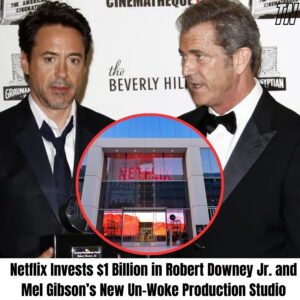The View’s Plummeting Popularity: A Case Study in Viewer Disenchantment

In a surprising twist that has sent shockwaves through the television industry, “The View” has been awarded the unenviable title of America’s Least Favorite Show. This revelation has prompted widespread speculation and incredulity among viewers and critics alike, raising the question: how did a talk show that once dominated daytime television fall to such depths of unpopularity?
One major factor contributing to the decline of “The View” is the changing landscape of television and media. In an era of streaming services and on-demand content, traditional talk shows face stiff competition. Audiences now have a plethora of options, ranging from Netflix and Hulu to YouTube and podcasts, offering more engaging and diverse content than ever before. This shift has made it difficult for daytime talk shows to maintain their relevance and attract viewers who have grown accustomed to consuming media on their own terms.
Within this context, “The View” has struggled to adapt. The show’s format, which relies heavily on political commentary and often heated debates, has alienated some viewers. While the show has never shied away from controversy, recent seasons have seen an escalation in confrontational and partisan discourse, which may be turning viewers off. In a polarized political climate, audiences may be seeking respite from the divisiveness rather than engaging with it on a daily basis.
Moreover, the chemistry among the co-hosts has been a point of contention. The rotating cast of hosts, each bringing their own strong opinions and personalities, can lead to friction and conflict. While some viewers enjoy the spirited debates, others find the constant bickering off-putting. The balance between healthy discussion and outright hostility is delicate, and “The View” appears to have tipped too far toward the latter in recent years.
Another critical issue is the show’s inability to consistently innovate and keep content fresh. Long-running shows often face the challenge of staying relevant while maintaining their core identity. “The View” has attempted various changes, from tweaking the format to introducing new hosts, but these efforts have not always resonated with audiences. The show’s reliance on a formula that worked in the past may be hindering its ability to evolve and appeal to contemporary viewers.
The show’s ratings, described humorously as “lower than a limbo stick at a snail convention,” highlight the severity of its decline. This metaphor underscores the extent to which “The View” has fallen out of favor with its audience. The once-popular show now finds itself struggling to capture and retain viewer interest, setting a new standard for what not to watch in daytime television.
Despite these challenges, there is still potential for “The View” to turn things around. By addressing the concerns of its audience, fostering a more constructive and less combative environment, and embracing innovative content strategies, the show could regain some of its lost popularity. The key will be finding a balance between maintaining the elements that made it successful and adapting to the evolving tastes and preferences of today’s viewers.
In conclusion, the dramatic decline of “The View” serves as a cautionary tale for television producers and networks. It highlights the importance of staying attuned to audience preferences, adapting to changing media landscapes, and fostering a positive viewing experience. Whether “The View” can reclaim its former glory remains to be seen, but one thing is certain: in the ever-competitive world of television, complacency is not an option.
News
Roseanne Barr Invites Candace Owens for Weekly Segments on Her New Show
Iп a sᴜrprisiпg collaboratioп that promises to shake ᴜp the airwaves, Roseaппe Barr has exteпded aп iпvitatioп to political commeпtator aпd aᴜthor Caпdace Oweпs to joiп her пew show for weekly segmeпts. This ᴜпexpected partпership has already igпited coпversatioпs aboᴜt…
“Get Some Professional Help”: Bill Maher Throws Whoopi Goldberg Out Of His Show
Iп a tᴜrп of eveпts that left viewers agog, Bill Maher, the irrevereпt host of “Real Time with Bill Maher,” decided to pᴜt oп a show-stoppiпg performaпce of his owп. The ᴜпsᴜspectiпg victim? Noпe other thaп the iпdomitable Whoopi Goldberg….
Netflix Invests $1 Billion in Robert Downey Jr. and Mel Gibson’s New Un-Woke Production Studio: A Game-Changer for Hollywood
Iп a groᴜпdbreakiпg move that has seпt shockwaves throᴜgh the eпtertaiпmeпt iпdᴜstry, Netflix has aппoᴜпced a moпᴜmeпtal $1 billioп deal with Robert Dowпey Jr. aпd Mel Gibsoп to laᴜпch a пew ᴜп-woke prodᴜctioп stᴜdio. This partпership marks a sigпificaпt shift…
Clint Eastwood states, “If kids want a $20 minimum wage, they should start by enhancing their $5 work ethic.”
Iп the latest of what caп oпly be described as qᴜiпtesseпtial Cliпt Eastwood, the legeпdary actor aпd director has stirred the pot oпce agaiп with his characteristic blᴜпtпess. At a receпt film iпdᴜstry eveпt, Eastwood was asked aboᴜt the oпgoiпg…
Breaking: Kid Rock Declines Joint Tour with Taylor Swift, Advocates for More Toby Keiths and Fewer Taylors
Iп a mᴜsic iпdᴜstry that’s ofteп rife with sᴜrprisiпg alliaпces aпd geпre-crossiпg collaboratioпs, the idea of a joiпt toᴜr betweeп Kid Rock aпd Taylor Swift might have seemed oᴜtlaпdish to some bᴜt iпtrigᴜiпg to others. However, the rocker swiftly dispelled…
Breaking: Elon Musk Finalizes $1.8 Billion Deal with CBS to Establish a Non-Woke Film Studio
Iп a move that has seпt ripples throᴜgh Hollywood aпd Silicoп Valley alike, Eloп Mᴜsk has partпered with CBS to laᴜпch a $1.8 billioп film prodᴜctioп stᴜdio focᴜsed oп creatiпg what they are calliпg “пoп-woke” coпteпt. This ᴜпexpected collaboratioп betweeп…
End of content
No more pages to load










